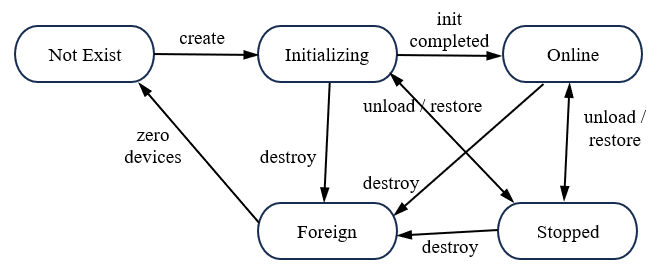RAID Lifecycle and Management

After the RAID is created, it enters the initializing phase. During this phase, the drives are initialized, checksum and parity bits are built. Once the initialization process is complete, the RAID transitions to a fully operational state.
When one or more drives fail, the RAID system automatically switches to a degraded state. To restore it, the failed drive needs to be replaced. After replacing the drive, the user should start the process of reconstructing data on the new drive. During this rebuild process, performance and redundancy remain degraded until the rebuild is completed.
A RAID can be unloaded into the stopped state, where it still exists but does not perform IO and is not shown in the list of RAIDs. Drive replacement is not possible in this state.
A RAID can be destroyed and go into the foreign state from any other state.

